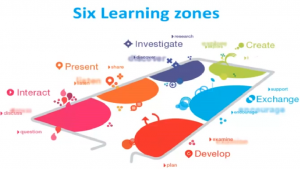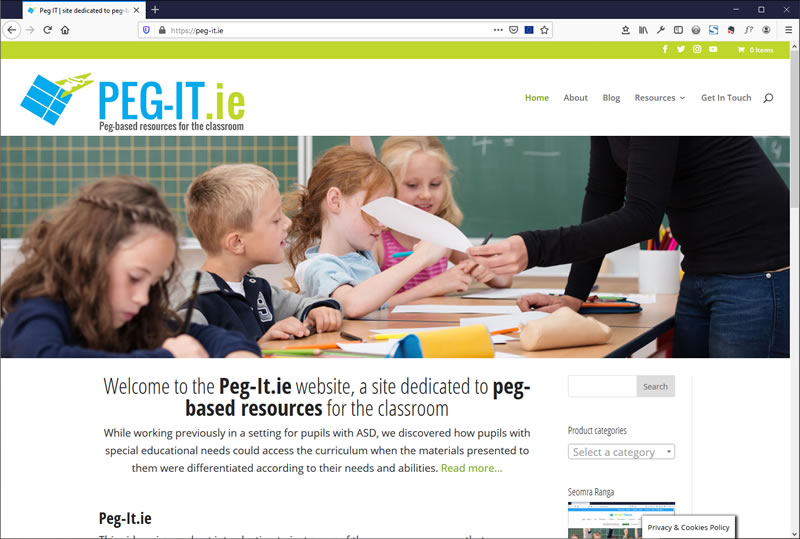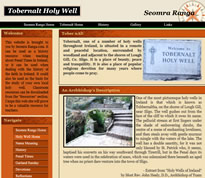 As a teacher, I am passionate about integrating ICT in educational settings. In particular, I am interested in how digital tools can really bring teaching and learning to life in creative, dynamic ways. Over the last few years, I’ve experimented with lots of ICT tools, some more challenging than others, leaving me keen to learn more! So I was delighted to recently join 17 European teachers at the Future Classroom Lab (FCL) in Brussels for a 2-day course on the Creative Use of Multi-Media and Devices in the Classroom.
As a teacher, I am passionate about integrating ICT in educational settings. In particular, I am interested in how digital tools can really bring teaching and learning to life in creative, dynamic ways. Over the last few years, I’ve experimented with lots of ICT tools, some more challenging than others, leaving me keen to learn more! So I was delighted to recently join 17 European teachers at the Future Classroom Lab (FCL) in Brussels for a 2-day course on the Creative Use of Multi-Media and Devices in the Classroom.
The Future Classroom Lab is a European Schoolnet initiative. It’s described as a large reconfigurable space divided into six ‘zones’ where each zone highlights specific areas of learning and teaching and helps to rethink different points: physical space, resources, changing roles of student and teacher, and how to support different learning styles. This video gives an explanation of how it works in practice:
Many courses are run at the FCL but the one I attended specifically focused on ways to creatively integrate multi-media (images, text, audio and video) into class settings using a range of technologies (PCs, tablets, cameras, microphones etc) and software that was mostly online or free to download (with the exception of some apps that incur a small charge). In the different learning zones, we collaboratively explored loads of ideas including poetry through comic creation, a story in 5 photos, online newspaper creation and so on. Many of the tasks/links are in the embedded Edcanvas below or at #cuom on Twitter where teachers from all over the world joined us during the 2 days!
However for me, two simple activities for connecting different elements of multi-media stood out:
Radio Show
The aim of this task was to bring together, text and audio by creating a short radio show containing 2-3 news items and the weather. In the same way that we might approach this task with children, we collaboratively planned our stories, wrote a script using a very cool ‘cue prompter’, narrated and recorded our news. As an extra challenge, we added a QR code and uploaded it to the social learning platform Edmodo where we could hear the different shows created by each group!
Future Classroom – The Movie
The next task aimed to link text, audio, image and video to make a short movie about the Future Classroom Lab. Again, some simple steps were needed such as: planning the movie (through group discussion), storyboarding (eg in 6 simple pictures), recording (using an iPad/iPod/camera) and editing using the fabulous Toon Camera app and iMovie or Windows Movie Maker. This task was a little more challenging and would probably suit more senior primary classes, but definitely worth the effort in terms of scope for innovative learning!
What I really liked about these activities was that they were so engaging and could easily be applied to many curricular areas, learning styles and abilities in lots of interesting ways. Of course the range of multi-media tools added an extra dynamic element by giving us different ways to work without necessarily requiring a lot of ‘hardware’. So even if equipment is limited, I believe activities like these (inspired by the curriculum and possibly supported online) provide interesting opportunities for creative and imaginative teaching / learning.
On reflection, my two days at the Future Classroom Lab was very enjoyable. Our facilitator Kurt Klynen, also a primary school teacher, (Twitter: @meesterkurt) gave us much to think about, play with and take away with us in terms of ideas and challenges to inspire and capture creativity in the classroom. I’d encourage any teacher to explore some of the resources/links that he provided. Finally, if you are interested in attending the FCL, this course is supported by Leargas and more information can be found HERE
Anne McMorrough is a primary school teacher currently seconded to Marino Institute of Education where she is lecturing in ICT. In 2009, she completed a Masters in Education at the School of Education, UCD. The focus of her dissertation explored the creative and innovative use of digital technologies within a primary class setting. In 2010, she began her doctoral studies at the School of Education, UCD under the supervision of Conor Galvin, PhD. She is also an Ambassador for eTwinning. You can follow her on Twitter at @annemmcm






Trackbacks/Pingbacks